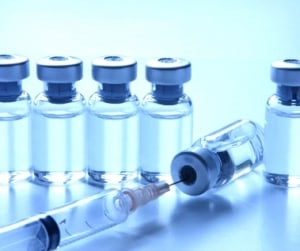The use of pre-filled glass syringes is becoming more and more prevalent as the preferred delivery device for drugs and vaccines. Pre-filled syringes are a more efficient, reliable and convenient method for drug administration helping to reduce drug waste and dosage errors while also improving safety.
 A number of testing standards have been developed for the testing of syringes. These standards, however, don’t specifically address pre-filled glass syringes. In April 2013, the FDA released a guidance document on the use of a couple of ISO standards for use in the testing of pre-filled glass syringes in response to some adverse events related to connectivity problems when certain glass syringes are used with connecting devices such as needles, needleless luer connectors, adapters, and transfer units.
A number of testing standards have been developed for the testing of syringes. These standards, however, don’t specifically address pre-filled glass syringes. In April 2013, the FDA released a guidance document on the use of a couple of ISO standards for use in the testing of pre-filled glass syringes in response to some adverse events related to connectivity problems when certain glass syringes are used with connecting devices such as needles, needleless luer connectors, adapters, and transfer units.
The two ISO standards the FDA currently recognizes related to glass syringes and connecting devices are:
- ISO 11040-4 (Pre-filled Syringes – Part 4: Glass barrels for injectables and ready-to-use pre-fillable syringes)
- ISO 594-2 (Conical fittings with 6% (Luer) taper for syringes, needles and certain other medical equipment – Part 2: Lock fittings).
The FDA expects all glass syringes intended to deliver drug or biological products have design features to connect to connecting devices in compliance with the ISO 11040-4 standard. The general assumption prior to the adverse events mentioned above was that glass syringes that conform to the ISO 11040-4 standard would ensure connectivity (interoperability) with any connecting devices that conform to the ISO 594-2 standard. However, the glass syringe standard, ISO 11040-4, has certain undefined key dimensions. For example, the standard lacks dimensions for the glass syringe nozzle internal diameter, thickness of nozzle wall, and barrel neck curvature. In contrast, the standard for the connecting devices, ISO 594-2, has specified dimensions in these areas. Therefore, it is possible that a glass syringe that meets the ISO 11040-4 standard may not properly connect to a device that conforms to the ISO 594-2 standard. Thus, the FDA has determined demonstrating conformity with the ISO 11040-4 standard alone does not ensure the glass syringe can be properly connected to connecting devices.
For those who seek to rely on conformity to ISO 11040-4, the FDA recommends taking into consideration the following with regard to the connection to connecting devices:
- Syringe inner and outer diameter
- Height of the nozzle for a glass barrel syringe intended to connect to a luer lock fitting
- Thickness of nozzle wall
- Barrel neck curvature
- Dimensions to accommodate luer locks with a center pin piercing element.
Data must then be submitted to demonstrate that the glass syringe has connectivity (interoperability) to connecting devices to ensure proper delivery of the drug or biological product.
DDL has assisted a number of customers in testing their pre-filled syringes per the recommendations set out by the FDA in the guidance document. While the guidelines are fairly straightforward, the instructions are vague and implementing the testing requires careful consideration of existing syringe test standards and how they can be leveraged to generate the appropriate data. A copy of the FDA guidelines can be found here.
Please contact DDL with any questions you may have on these guidelines, or if you would be interested in receiving a quote.